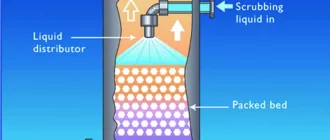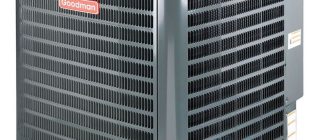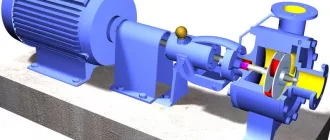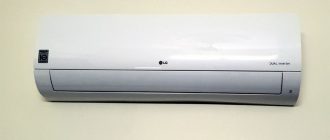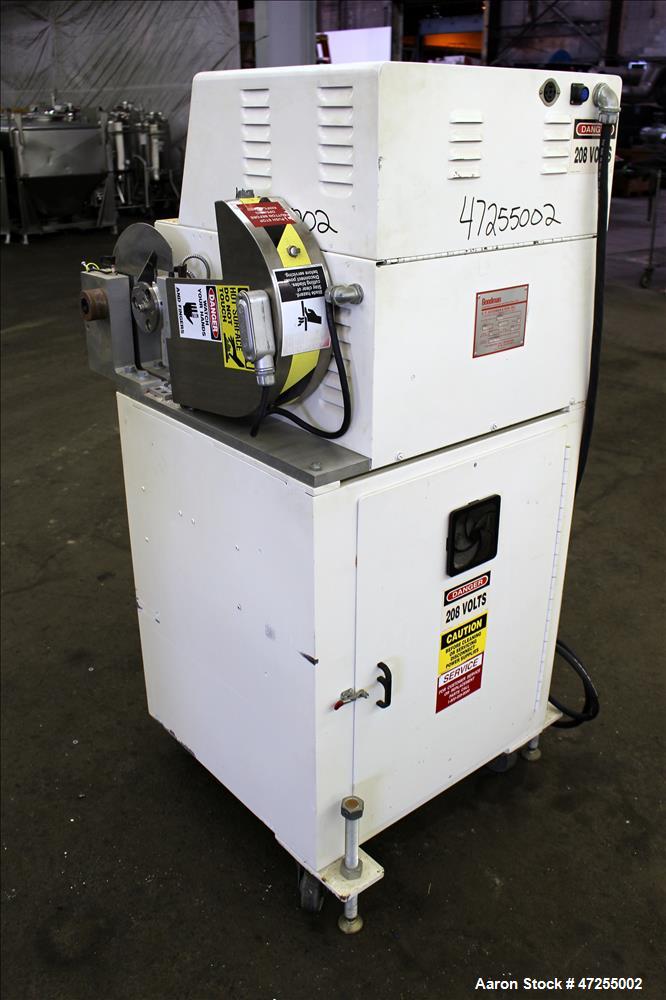
What refrigerant is used by Goodman?
Goodman is a well-known brand in the HVAC industry, providing high-quality heating, ventilation, and air conditioning products. One of the key components in their systems is the refrigerant, a substance responsible for transferring heat and making the air colder. Goodman uses several refrigerants in their products, but one of the most common ones is R-410A.
R-410A is a hydrofluorocarbon (HFC) refrigerant that has become widely used in recent years. It is considered a more environmentally-friendly alternative to older refrigerants like R-22, which are known for their harmful impact on the ozone layer. R-410A does not contribute to ozone depletion and has a significantly lower global warming potential.
One of the advantages of R-410A is its superior efficiency and performance. It allows Goodman systems to provide reliable and efficient cooling, even in extreme temperatures. This makes it an ideal choice for residential and commercial applications, where cooling needs are high and energy efficiency is critical.
“By using R-410A, Goodman ensures that their systems meet the industry standards and regulations for refrigerants, while also delivering exceptional performance and comfort to their customers.”
In addition to its environmental benefits and performance, R-410A is also known for its safety. It has a higher operating pressure compared to other refrigerants, which requires specific design considerations for systems using R-410A. Goodman ensures that their products are designed and built to meet these requirements, providing safe and reliable cooling solutions for their customers.
In conclusion, R-410A is a common refrigerant used by Goodman in their HVAC systems. Its environmental benefits, superior performance, and safety make it an ideal choice for residential and commercial cooling applications. Goodman’s commitment to using R-410A demonstrates their dedication to providing high-quality and environmentally-friendly products to their customers.
A Brief Guide to the Common Refrigerant Used by Goodman
Goodman is a well-known brand in the HVAC industry, and they use a common refrigerant in their products. Refrigerant is a crucial component of air conditioning and cooling systems as it helps in heat transfer and cooling. Goodman uses a specific type of refrigerant called R-410A, also known as Puron, in most of their units.
R-410A is a hydrofluorocarbon (HFC) refrigerant that does not contribute to ozone depletion. It has become the standard replacement for older refrigerants like R-22, which are being phased out due to their harmful effects on the environment. R-410A is considered more environmentally friendly as it has no chlorine, which affects the ozone layer.
One key advantage of R-410A is its higher heat transfer properties compared to older refrigerants. This allows Goodman systems to achieve higher energy efficiency and provide better cooling performance. R-410A also operates at higher pressures, which requires a different set of components like compressors and piping compared to older systems using R-22 refrigerant.
When it comes to servicing, it is crucial to have a qualified technician who is knowledgeable about R-410A refrigerant and Goodman systems. This ensures proper handling, charging, and maintenance to maximize system performance and longevity.
In conclusion, R-410A is the common refrigerant used by Goodman in their air conditioning and cooling systems. It offers better energy efficiency, environmental friendliness, and higher cooling performance compared to older refrigerants. It is important to have a qualified technician for servicing Goodman systems to ensure proper handling and maintenance.
Understanding Refrigerants and Their Importance in AC Units
Refrigerants play a crucial role in the functioning of air conditioning (AC) units, including those manufactured by Goodman. A refrigerant is a substance used in cooling systems to extract heat from the surroundings and transfer it to a different location. This process allows AC units to cool down the air in a controlled manner, providing comfort and relief during hot weather.
Goodman, a well-known brand in the HVAC industry, utilizes various refrigerants in its AC units. One of the common refrigerants used by Goodman is R-410A, also referred to as Puron. This refrigerant has replaced the previously used R-22 due to environmental concerns. R-410A is considered environmentally friendly because it does not contribute to ozone depletion.
Importance of refrigerants in AC units cannot be overstated. They are the lifeblood of the cooling process, responsible for the transfer of heat from one area to another. Without the proper refrigerant, an AC unit would not be able to function effectively, resulting in poor cooling performance or even complete breakdown.
The selection of the right refrigerant is essential for optimal performance and energy efficiency of AC units. Refrigerants like R-410A offer superior cooling capacity and energy efficiency compared to older alternatives. AC units that use R-410A can provide reliable cooling performance while minimizing energy consumption, contributing to lower utility bills and reduced environmental impact.
| R-410A | Puron | Environmentally friendly, does not contribute to ozone depletion |
In conclusion, understanding the importance of refrigerants in AC units, including those manufactured by Goodman, is crucial. Refrigerants like R-410A provide efficient cooling performance while being environmentally friendly. Proper selection and maintenance of refrigerants can ensure the longevity and optimal functioning of AC units, contributing to a comfortable and energy-efficient indoor environment.
The Role of Refrigerants in Cooling Systems
Refrigerants play a crucial role in cooling systems, including those manufactured by Goodman. These substances are responsible for the transfer of heat from the air inside a space to the outside environment, creating a cooling effect. They circulate through the system, transitioning between gas and liquid states to facilitate the heat transfer process.
Goodman, a leading manufacturer of HVAC systems, utilizes various types of refrigerants in their cooling systems. One common refrigerant used by Goodman is R-410A, which is a hydrofluorocarbon (HFC) that does not contain chlorine. This refrigerant has become widely adopted due to its high energy efficiency and low environmental impact.
The use of proper refrigerants is essential for the efficient operation and longevity of cooling systems. Refrigerants like R-410A allow systems to cool indoor spaces effectively while minimizing energy consumption. They also contribute to the overall environmental sustainability of the HVAC industry by reducing greenhouse gas emissions.
Goodman, in line with industry standards and regulations, ensures that their cooling systems are designed to use refrigerants that comply with environmental guidelines. This commitment reflects their dedication to providing high-quality, energy-efficient cooling solutions.
In conclusion, refrigerants, including those used by Goodman, are integral components of cooling systems. They enable the transfer of heat and ensure efficient cooling while considering environmental impact. By utilizing advanced refrigerants like R-410A, Goodman continues to deliver effective and sustainable solutions for indoor cooling needs.
R-410A: The Leading Refrigerant Used by Goodman
When it comes to choosing a reliable refrigerant for your Goodman air conditioning and heating systems, R-410A is the leading choice. This refrigerant has become the industry standard for its superior performance and environmental benefits.
R-410A is a hydro-fluorocarbon (HFC) refrigerant blend consisting of two main components: difluoromethane (R-32) and pentafluoroethane (R-125). It is a non-ozone depleting refrigerant, which means it does not contribute to the depletion of the Earth’s ozone layer.
One of the main advantages of R-410A is its high energy efficiency. Compared to older refrigerants, such as R-22, R-410A allows Goodman systems to operate at higher pressures and temperatures, resulting in increased efficiency and reduced energy consumption. This not only saves you money on your energy bills but also reduces carbon emissions, helping to protect the environment.
Furthermore, R-410A offers better heat transfer properties than its predecessors, resulting in faster and more efficient cooling and heating performance. This means your Goodman system can quickly and effectively regulate the temperature in your home, ensuring optimal comfort all year round.
In addition to its energy efficiency and environmental benefits, R-410A is also known for its safety. It has a higher pressure rating than older refrigerants, making it more resistant to leaks and reducing the risk of accidents or system failures. However, it is still important to handle and store R-410A refrigerant properly, following all safety guidelines and regulations.
Overall, R-410A is the top choice refrigerant used by Goodman due to its superior performance, energy efficiency, environmental friendliness, and safety. By choosing Goodman systems that use R-410A, you can enjoy reliable and efficient cooling and heating while also contributing to a more sustainable future.
Benefits of R-410A in Goodman Air Conditioners
R-410A is the refrigerant used in Goodman air conditioners, and it offers several benefits compared to other refrigerants.
1. High Energy Efficiency: R-410A has a higher energy efficiency compared to older refrigerants like R-22. This allows Goodman air conditioners to provide better cooling performance while consuming less energy, helping to lower energy bills.
2. Environmentally Friendly: R-410A does not contribute to ozone depletion, making it an environmentally friendly choice for cooling systems. It has a lower global warming potential compared to R-22, reducing the impact on the environment.
3. Improved Performance: The use of R-410A in Goodman air conditioners enables them to operate at higher pressures, resulting in improved performance and better cooling efficiency. This allows for faster and more effective cooling in any room or space.
4. Future-Proof: As the refrigerant of choice for modern air conditioning systems, R-410A is widely available and will continue to be for the foreseeable future. This ensures that Goodman air conditioners equipped with R-410A will have easy access to refrigerant for servicing and maintenance.
Overall, R-410A is a superior refrigerant for Goodman air conditioners, providing higher energy efficiency, environmental friendliness, improved performance, and future availability. Invest in a Goodman air conditioner with R-410A for optimal cooling comfort and peace of mind.
| High Energy Efficiency |
| Environmentally Friendly |
| Improved Performance |
| Future-Proof |
R-22 vs. R-410A: Why Did Goodman Switch?
Refrigerants play a crucial role in the operation of air conditioning and refrigeration systems. They are responsible for absorbing heat from the indoor air and releasing it outside, allowing the systems to cool the indoor environment.
In the past, R-22, also known as HCFC-22 or Freon, was the common refrigerant used in air conditioning systems. However, it was discovered that R-22 has a high ozone depletion potential (ODP) and contributes to the depletion of the Earth’s ozone layer. This led to the phasing out of R-22 under the Montreal Protocol.
In response to the need for more environmentally friendly refrigerants, manufacturers like Goodman made the switch to R-410A. R-410A is a hydrofluorocarbon (HFC) refrigerant that has no ODP and a lower global warming potential (GWP) compared to R-22.
The transition from R-22 to R-410A has several benefits. Firstly, it helps protect the environment by reducing ozone depletion and greenhouse gas emissions. Secondly, systems that use R-410A tend to be more energy-efficient, resulting in lower energy consumption and utility bills for homeowners. Lastly, R-410A systems often perform better and provide improved comfort compared to R-22 systems.
Goodman’s decision to switch to R-410A reflects their commitment to sustainability and their recognition of the importance of using environmentally friendly refrigerants. By adopting R-410A, Goodman not only meets regulatory requirements but also contributes to the conservation of the Earth’s ozone layer and mitigates the impact of climate change.
Environmental Considerations with Refrigerants
Refrigerants play a crucial role in the cooling process of various appliances, including air conditioners and refrigerators. However, the environmental impact of refrigerants is a major concern.
Many traditional refrigerants, such as chlorofluorocarbons (CFCs) and hydrochlorofluorocarbons (HCFCs), have been found to contribute to ozone depletion and have a high global warming potential (GWP). Due to these negative environmental impacts, there has been a global effort to phase out the use of these refrigerants.
In response to this, newer refrigerants, such as hydrofluorocarbons (HFCs) and hydrofluoroolefins (HFOs), have been developed as alternatives. HFCs do not contain chlorine and do not contribute to ozone depletion. However, they still have a high GWP, which means that they have a significant impact on global warming.
HFOs, on the other hand, have a low GWP and do not contribute to ozone depletion. They are considered to be more environmentally friendly than HFCs and have gained popularity in recent years. However, HFOs are flammable, which presents safety concerns.
It is important for manufacturers, like Goodman, to consider the environmental impact of the refrigerants they use in their products. Goodman has transitioned towards using refrigerants with lower GWP and reduced environmental impact. By doing so, they are contributing to the overall efforts to protect the environment and mitigate climate change.
Overall, the choice of refrigerants has a significant impact on the environment, and it is essential for manufacturers to prioritize the use of environmentally friendly options. Moving towards refrigerants with lower GWP and reduced environmental impact is crucial in protecting the ozone layer and mitigating the effects of climate change.
Compliance with Environmental Regulations in Refrigerant Use
Goodman has always been committed to promoting the use of environmentally-friendly refrigerants in its products. As a responsible manufacturer, Goodman recognizes the importance of complying with regulatory requirements and reducing the environmental impact of refrigerant use.
Goodman strictly adheres to international and local regulations regarding the production and use of refrigerants. The company ensures that all its products meet the required standards and are compliant with environmental regulations.
Goodman actively participates in industry initiatives aimed at advancing environmental sustainability. The company invests in research and development to improve the efficiency and performance of its refrigerant systems, while reducing their environmental impact.
In addition to compliance with regulations, Goodman promotes responsible refrigerant management. The company advises its customers on proper handling, recycling, and disposal of refrigerants to minimize their potential harm to the environment.
Goodman also emphasizes the importance of using refrigerants with low global warming potentials (GWPs). Through continuous innovation, the company strives to develop and integrate refrigerants with minimal environmental impact into its products.
- Goodman places a high priority on the responsible use of refrigerants
- The company complies with international and local regulations
- Goodman invests in research and development to improve refrigerant systems
- The company advises on proper handling, recycling, and disposal of refrigerants
- Goodman promotes the use of refrigerants with low global warming potentials (GWPs)
By prioritizing compliance with environmental regulations and promoting responsible refrigerant management, Goodman is dedicated to minimizing the environmental impact associated with refrigerant use.
Refrigerant Leaks: Causes, Signs, and Tips for Prevention
A refrigerant is a substance used in cooling systems, such as air conditioners and refrigerators, to transfer heat from the inside to the outside. However, refrigerant leaks can occur, which can lead to a decrease in cooling efficiency and potential damage to the system. Understanding the causes, signs, and prevention tips for refrigerant leaks is important to maintain the performance and longevity of your cooling equipment.
Causes of refrigerant leaks:
There are several common causes of refrigerant leaks, including:
- Poor installation: Improper installation of the cooling system can result in leaks. This can occur when the refrigerant lines are not properly connected or when the system is overcharged with refrigerant.
- Age and wear: Over time, the seals and joints in the cooling system can deteriorate, resulting in leaks. This is especially common in older systems.
- Physical damage: Accidental damage to the refrigerant lines, such as from contact with sharp objects or during construction or renovation activities, can cause refrigerant leaks.
Signs of refrigerant leaks:
There are several signs that may indicate a refrigerant leak:
- Poor cooling performance: If your cooling equipment is no longer providing sufficient cooling or takes longer to reach the desired temperature, it could be a sign of a refrigerant leak.
- Frozen evaporator coil: A refrigerant leak can cause the evaporator coil to freeze, which can lead to reduced airflow and cooling efficiency.
- Hissing or bubbling sounds: If you hear unusual sounds coming from your cooling system, it could indicate a refrigerant leak.
Tips for preventing refrigerant leaks:
While some refrigerant leaks may be unavoidable, there are steps you can take to minimize the risk:
- Regular maintenance: Schedule regular maintenance for your cooling system to ensure that it is operating correctly and to catch any potential issues, such as refrigerant leaks, early.
- Proper installation: Have your cooling system installed by a qualified professional to ensure that it is done correctly and that the refrigerant lines are connected properly.
- Protect the refrigerant lines: Take steps to protect the refrigerant lines from physical damage, such as by avoiding contact with sharp objects or keeping them away from construction or renovation activities.
By understanding the causes, signs, and prevention tips for refrigerant leaks, you can help maintain the efficiency and performance of your cooling system, prolonging its lifespan and avoiding potential costly repairs.
Common Issues with Refrigerant and Their Troubleshooting
When it comes to refrigerants, there are several common issues that can arise. It’s important to be aware of these issues and know how to troubleshoot them in order to ensure your refrigeration system operates efficiently.
1. Leaks
One common issue with refrigerant is leaks. Leaks can occur in the refrigerant lines, connections, or even the evaporator or condenser coil. If you suspect a leak, you may notice a decrease in cooling performance or a hissing sound near the unit. To troubleshoot a leak, you can inspect the refrigerant lines for any visible signs of leakage, such as oil stains or frost buildup. Once you’ve identified the source of the leak, you can either repair or replace the damaged component.
2. Contamination
Another common issue with refrigerant is contamination. Contaminants, such as moisture, acids, or oil, can enter the refrigerant system and cause damage. This can lead to poor cooling performance or system failure. To troubleshoot contamination, you can perform a refrigerant analysis to determine the presence of any contaminants. If contaminants are present, you may need to flush the system and replace the refrigerant.
3. Improper Refrigerant Charge
Improper refrigerant charge is a common issue that can impact the efficiency of your refrigeration system. If the refrigerant charge is too low or too high, it can lead to poor cooling performance and increased energy consumption. To troubleshoot this issue, you can check the refrigerant pressure and compare it to the manufacturer’s specifications. If the charge is incorrect, you can adjust it by adding or removing refrigerant as needed.
4. Inadequate Refrigerant Flow
Inadequate refrigerant flow can also be a common issue with refrigerant. This can occur if there are restrictions in the refrigerant lines or if the system is overcharged. Inadequate flow can lead to reduced cooling capacity and increased compressor workload. To troubleshoot this issue, you can check for any obstructions or restrictions in the refrigerant lines. If necessary, you can remove the obstruction or adjust the refrigerant charge to improve flow.
5. System Incompatibility
Lastly, system incompatibility can be a common issue if the wrong type of refrigerant is used in the system. This can lead to poor cooling performance and potential damage to the components. To troubleshoot this issue, you can check the manufacturer’s guidelines to ensure you are using the correct refrigerant for your system. If the refrigerant is incompatible, you may need to drain and replace it with the correct type.
By understanding these common issues with refrigerant and knowing how to troubleshoot them, you can ensure that your refrigeration system operates efficiently and effectively.
Refrigerant Recharge: When and How to Do It
When it comes to the common refrigerants used by Goodman, it is important to understand when and how to recharge them. Refrigerant recharge is often necessary when the levels of refrigerant in the system have become low, leading to a decrease in cooling efficiency.
Goodman uses various refrigerants in their systems, including R-410A, which is a popular choice due to its eco-friendly properties. However, regardless of the refrigerant used, the recharge process typically follows the same general steps.
The first step in recharging the refrigerant is to locate the service valves on the air conditioning system. These valves are typically located near the condenser unit. Once the service valves are located, they can be accessed by removing the valve caps.
After accessing the service valves, a pressure gauge can be attached to measure the current pressure of the refrigerant in the system. If the pressure is below the recommended level, this indicates that a recharge is needed.
Next, a can or cylinder of refrigerant can be connected to the service valves. It is important to follow the manufacturer’s instructions for the specific type of refrigerant being used. The technician should then slowly release the refrigerant into the system, monitoring the pressure gauge to ensure that the correct level is reached.
Once the correct level of refrigerant is reached, the technician can disconnect the can or cylinder and replace the valve caps. It is important to handle the refrigerant with care, as it can be harmful if it comes into contact with the skin or eyes.
It is worth noting that refrigerant recharge should only be performed by a qualified HVAC technician. Attempting to recharge the refrigerant without proper training and equipment can be dangerous and may result in damage to the system or injury to oneself.
In conclusion, when it comes to recharging the common refrigerants used by Goodman, it is important to understand when a recharge is needed and how to properly perform the recharge. By following the recommended steps and seeking professional assistance, one can ensure that their Goodman system continues to operate at its optimal level of performance.
Importance of Professional HVAC Service for Refrigerant Handling
Proper maintenance and servicing of HVAC systems is crucial for their efficient functioning and longevity. One important aspect of HVAC service is the handling of refrigerants.
Refrigerants are substances used in HVAC systems to transfer heat and maintain the desired temperature. They are essential for the cooling process in air conditioners and heat pumps. However, refrigerants can be hazardous if not handled properly.
A professional HVAC service provider understands the importance of proper refrigerant handling. They have the knowledge and expertise to handle refrigerants safely and according to industry standards. They are trained to handle refrigerants in a way that minimizes the risk of leaks and ensures the safety of both the technicians and the environment.
Improper refrigerant handling can lead to various issues. One common problem is refrigerant leaks. When refrigerant leaks occur, the system’s cooling efficiency is compromised, leading to decreased performance and increased energy consumption. Refrigerant leaks can also be harmful to the environment, as many refrigerants contribute to ozone depletion and climate change.
Professional HVAC service providers have the necessary tools and equipment to detect and repair refrigerant leaks. They can also properly dispose of refrigerants that are no longer in use, ensuring that they do not harm the environment. Additionally, they can recharge the system with the correct amount of refrigerant, optimizing its performance and energy efficiency.
In conclusion, professional HVAC service is crucial for proper refrigerant handling. It ensures the safety of technicians and the environment, prevents refrigerant leaks, and maximizes the efficiency and longevity of HVAC systems.
Q&A:
What are the common refrigerants used by Goodman?
Goodman commonly uses R-410A and R-22 as refrigerants in their air conditioning units.
Why does Goodman use R-410A as a refrigerant?
Goodman uses R-410A as a refrigerant because it is an environmentally friendly alternative to older refrigerants like R-22. R-410A does not contribute to ozone depletion and has a lower impact on global warming.
What are the advantages of using R-410A?
Using R-410A as a refrigerant offers several advantages. It provides better heat transfer properties, increasing the efficiency of air conditioning systems. It also allows for smaller and lighter equipment designs. Additionally, R-410A ensures compliance with environmental regulations related to ozone depletion and global warming.
Is R-410A compatible with older air conditioning units?
No, R-410A is not compatible with older air conditioning units designed for use with R-22. The two refrigerants have different operating pressures and require different equipment designs. If your air conditioning unit uses R-22, it cannot be retrofitted to use R-410A.
What should I do if my Goodman air conditioning unit with R-22 refrigerant needs to be replaced?
If your Goodman air conditioning unit uses R-22 and needs to be replaced, you should consider purchasing a new unit that uses R-410A refrigerant. R-22 is being phased out due to its environmental impact, and finding replacement parts and servicing for R-22 units may become more difficult and expensive in the future.
What are the most common refrigerants used by Goodman?
The most common refrigerants used by Goodman are R-410A and R-22. R-410A is the standard refrigerant used in all new Goodman air conditioning units, while R-22 is used in older models that were manufactured before the EPA banned its production and importation.
Why is R-410A the standard refrigerant used by Goodman?
R-410A is the standard refrigerant used by Goodman because it is considered to be more environmentally friendly than R-22. R-410A does not contribute to ozone depletion, while R-22 contains chlorine, which does harm the ozone layer. Additionally, R-410A has a higher energy efficiency and better overall performance compared to R-22, making it a preferred choice for new air conditioning units.

